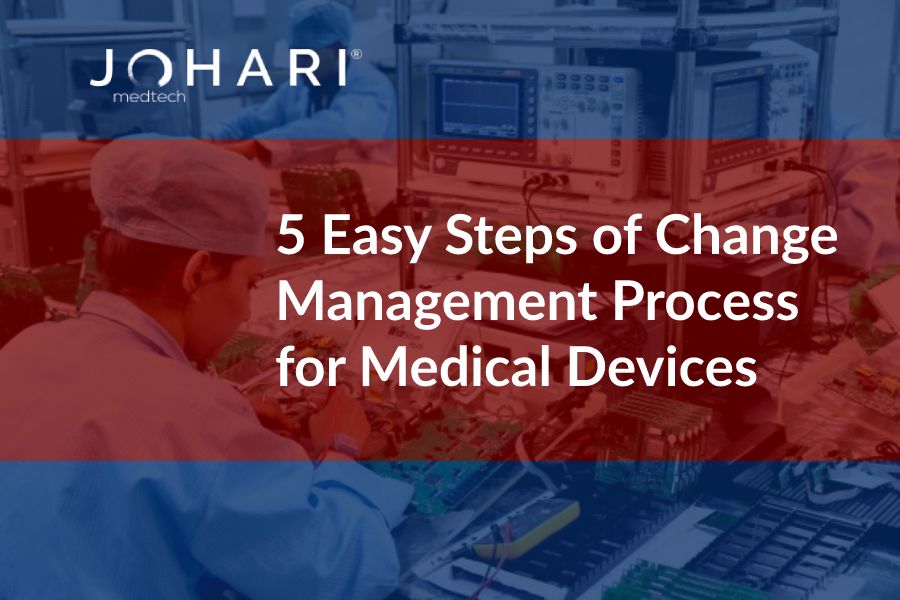Change is an essential part of the Medical Device Development Process. Every successful Medical Device starts from a naïve idea that undergoes very rigorous processing to come out as a successful medical device serving an exact purpose.
A Medical Device Development process involves many steps to refine an idea and transform it into a manufacturable Medical Device.
The process in general is divided into 7 phases including:
- Research
- Prototyping
- Development
- Analysis
- Transfer to Manufacturing
- Assembly
- Packaging
The process of Continual Risk Management throughout the product development cycle leads to several changes that require effective implementation, analysis, and evaluation. The entire development cycle consists of recurrent cycles of Change implementation and processing.
Let’s us understand the change management process in 5 easy steps:
Step #1. Proposal of Change Implementation
A change comes into the picture when a process isn’t giving satisfactory results. A change Manager has the core responsibility to evaluate the gravity of the proposal. The relevance of the proposed change to the problem. Post-evaluation, when the project manager is convinced to implement the change, is implemented in the product development process.
Step #2. Risk Assessment
Medical Devices belong to three categories including Class I, Class II, and Class III Medical Devices. Class I Medical Devices have the least amount of risk associated; Class II Medical Devices have slightly higher risks. Class III Medical Devices have the highest level of invasiveness and therefore have a high level of risk associated.
No matter how impressive your risk management process remains, there will always be some level of risk associated with the device. How much risk is permissible and if a change is being proposed, will it increase the risk associated with the device? These are the questions that need careful analysis before implementation.
Step #3. Approval
Once everything is analyzed the change proposed is finally approved by the approval team.
Step #4. Implementation
Once implemented the “changes” are carefully checked for the results. If the changes made or processes implemented fail to deliver the desired results, then again the entire process enters an introspection phase. In case of changes are implemented to give desired results, then changes are made permanent and included as a part of the SOP.
Step #5. Post Implementation Review
For several months the constant results are verified and validated against the standards. Once the results obtained are consistently positive, the “change” identified initially is justified.
Our streamlined change management process ensures that we cater to the requirement of any on-going changes to address Customer Complaint, Market Feedback, Product Enhancement and Cost Improvement.
We readily address and record changes required in the product at pre and post-market stages. Our documentation process, including ECR (Engineer Change Requirement document) and ECN (Engineer Change Note), is strictly maintained to track every big and small change at every step. The documentation process assures traceability over years.
We ensure 100% accurate, cost-effective & quality medical device manufacturing.
Get in touch with Johari Digital Healthcare Ltd. to experience quality Medical Device Manufacturing.

